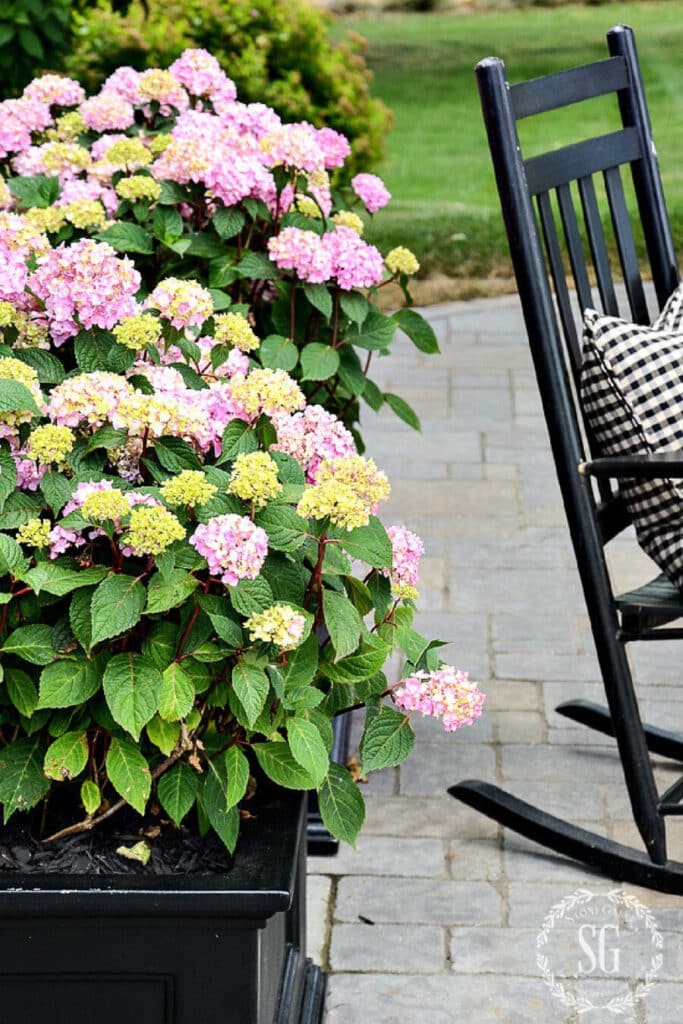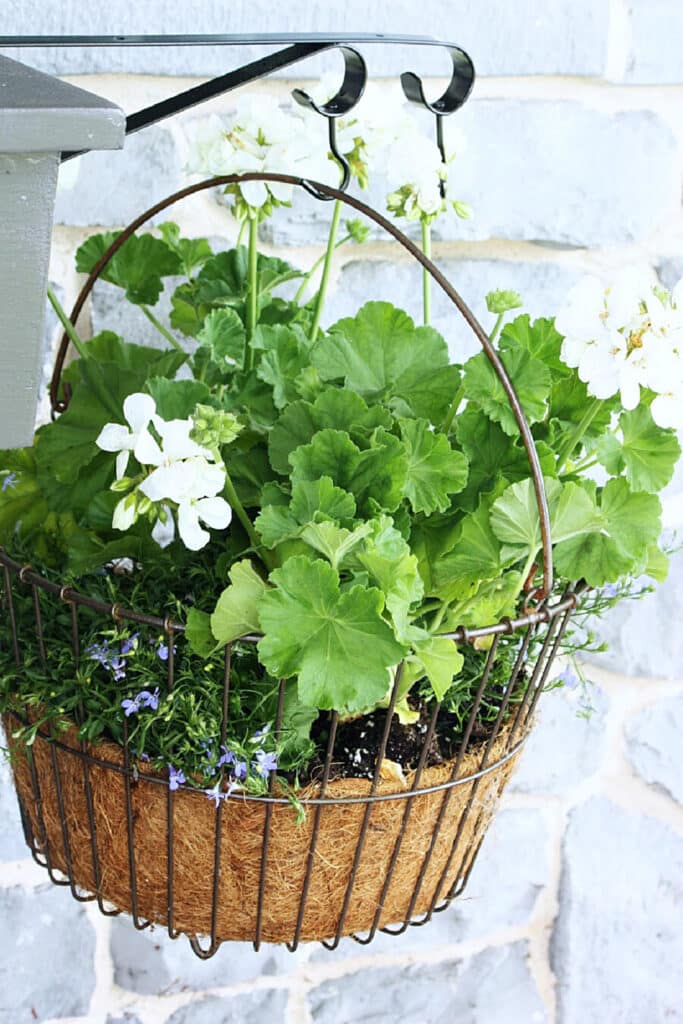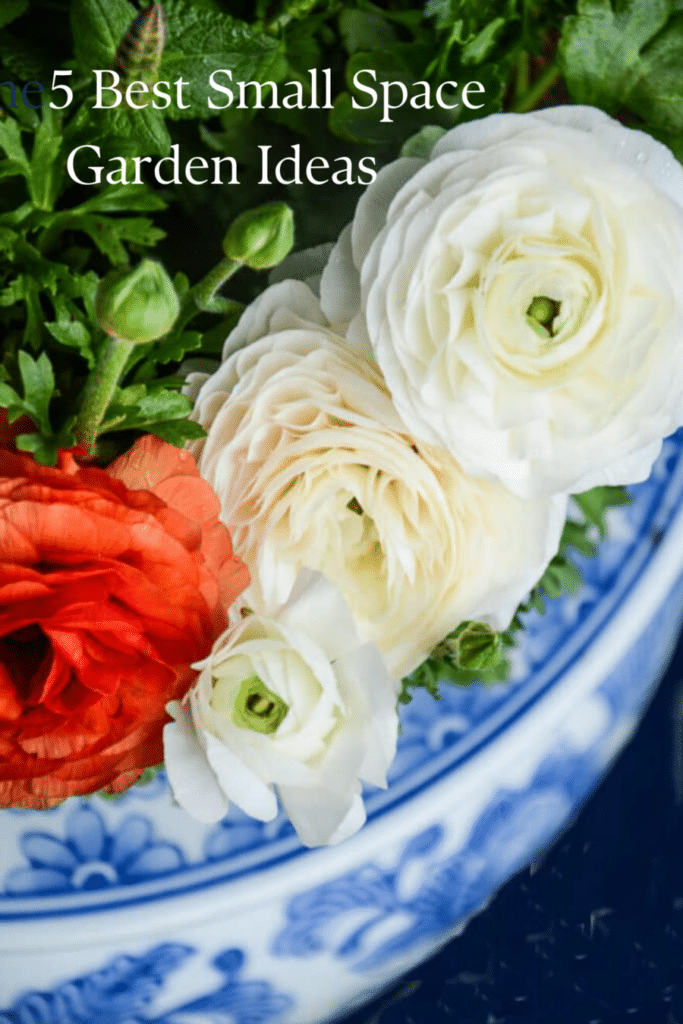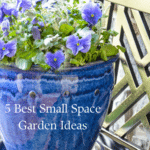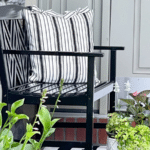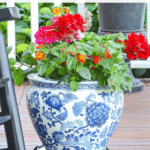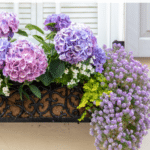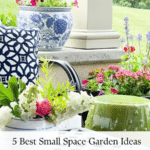5 Best Small Space Gardening Ideas
Looking for creative ways to garden in small spaces? Look no further! These five unique garden ideas will help you make the most of your outdoor spaces.
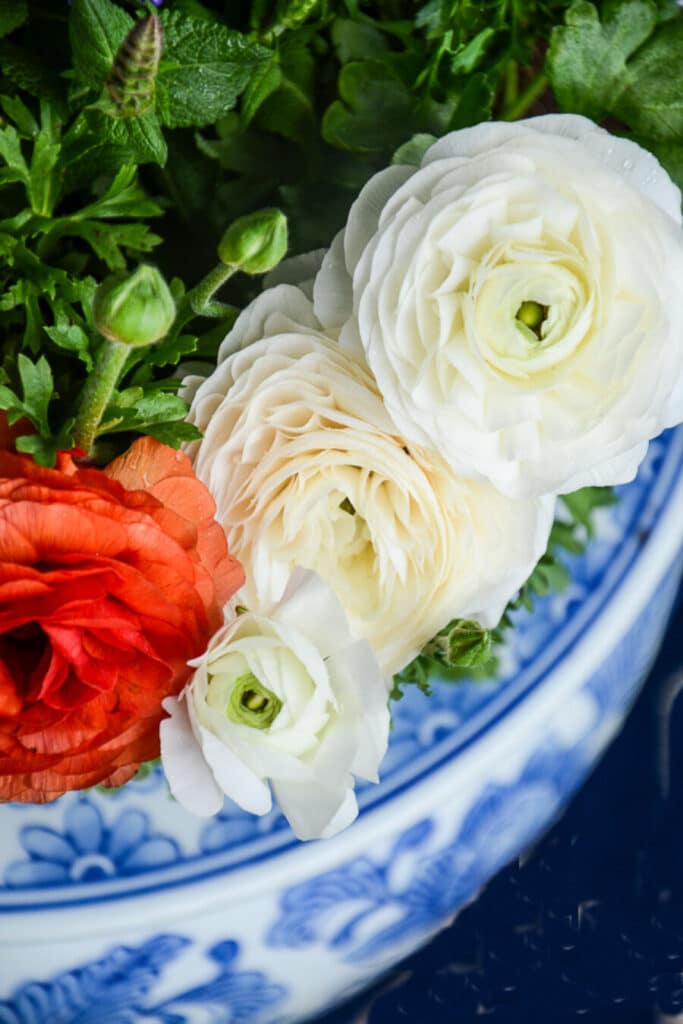
Now is the time to consider adding beauty to your outdoor spaces with flowers, herbs, and plants. Even if you have limited space around your home and yard, you can still enjoy digging in the dirt and enjoying the fruits of your labor. Here are five colorful and unique small garden ideas that will help you make the most of your outdoor spaces.
Affiliate links may be included at no additional cost to you. For more information, see our Discloser Policy. As an Amazon Associate, I earn from qualifying purchases.
Container Gardens
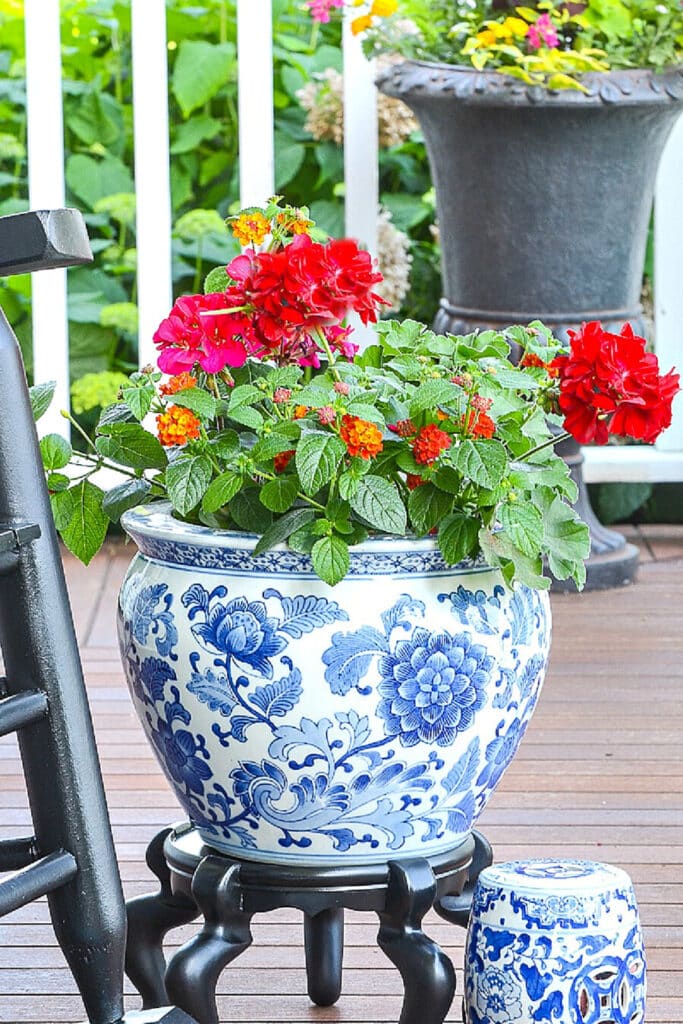
This is my absolute favorite way to garden! It’s amazing how many annuals, perennials, herbs, and even vegetables you can put in a pot! Planters are perfect for low-maintenance gardeners and people with small garden spaces.
Advantages Of Container Gardening
Container gardens allow you to plant in spaces where traditional gardening is not feasible. Balconies, decks, and patios are perfect places for a container garden.
You can garden in a variety of containers, including traditional flower pots and hanging baskets. Or find a container unique to you. I used a Chinese fishbowl that had been kicking around in my basement for over a decade. It worked perfectly as a planter on our small patio!
Other reasons to love container gardening are…
- Container gardens significantly reduce the likelihood of weed growth.
- Container gardening is suitable for people with limited mobility, as it can be done at waist height. It’s so much better for our knees.
- Using self-watering containers (I LOVE these) makes water much easier and keeps the soil hydrated.
- Containers add visual interest to outdoor spaces.
- These self-contained gardens can be moved to areas where they will thrive and add to the beauty to our outdoor spaces.
- The flowers and herbs in a container garden can be cut and brought inside for arrangements and culinary purposes.
Choose The Right Container
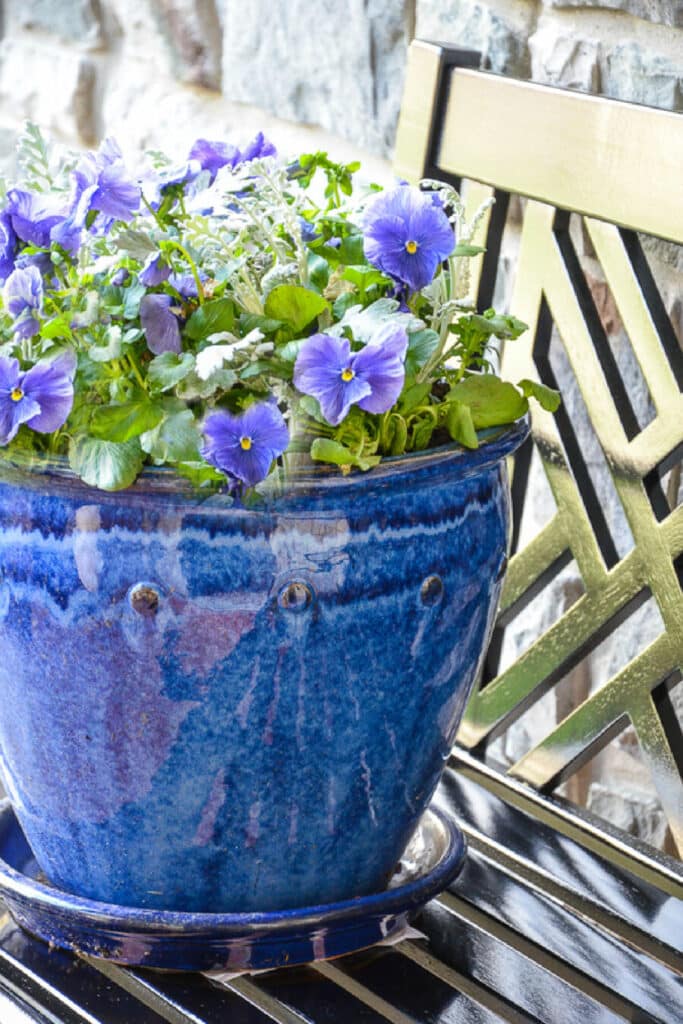
Choosing the right container for your container garden is essential. The right container directly impacts the health and growth of your plants. The container’s size, material, and drainage capacity play important roles in providing the appropriate environment for plant roots to thrive.
Size
A container that is too small can restrict root growth. This leads to stunted plants, while one that is too large may retain too much water, causing root rot. So, make sure your plantings comfortably fit into the container you choose. And leave a little bit of room for them to grow.
Material
Selecting a container made from suitable materials, such as breathable terracotta or UV-resistant plastic, promotes proper air circulation and insulation for the plant’s roots. Make sure the container you choose has adequate drainage holes to prevent waterlogging. Drainage holes help to maintain optimal soil moisture levels, which is crucial for the health of the plants.
This is more or less a do-as-I-say-and-not-what-I-do situation. I will use almost anything to plant annuals and herbs! What I usually do with a pot, like a fishbowl, to create a way for water to stay away from the roots of plants is to put the nursery containers the plants come in at the bottom of the garden container.
Our own patio is graced with an attractive assortment of floral container gardens scattered around our cozy seating area.
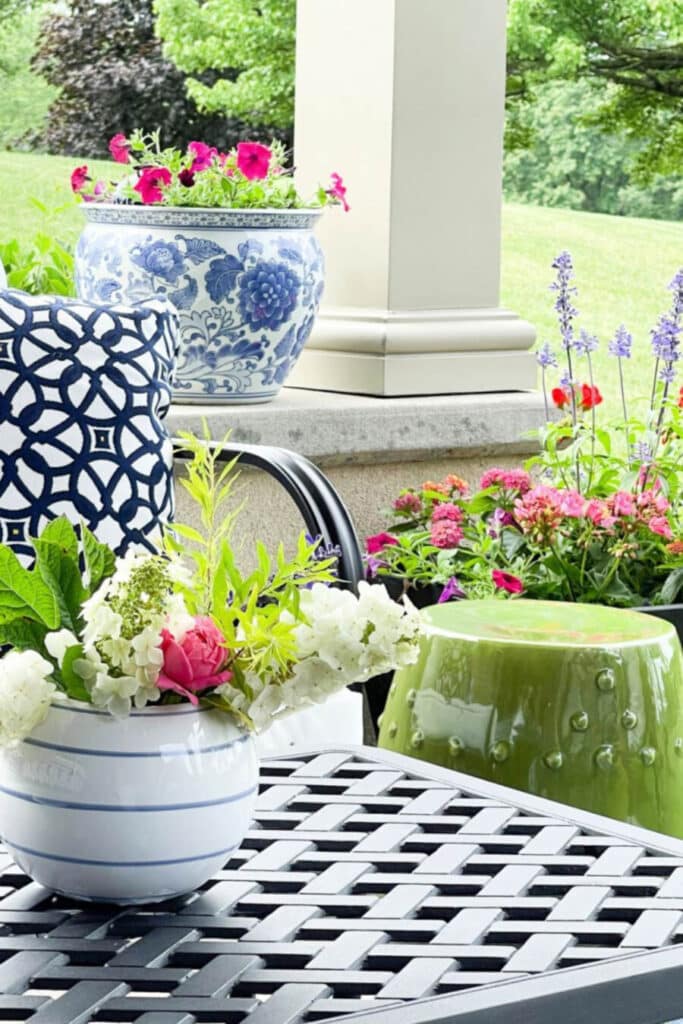
Growing Vegetables In Containers
We enjoy homegrown vegetables, so we also plant them in planters. Many varieties of veggies, like tomatoes, peppers, beans, and even potatoes, can thrive and flourish in pots or other containers! We’ve even grown bush cucumbers in a pot and trained their vines to grow vertically with a small trellis.
To help you with container gardening, you might like to read The Ultimate Guide To Container Gardening. And Herb Container Gardening Guide.
Use Every Space Available In Your Garden Beds
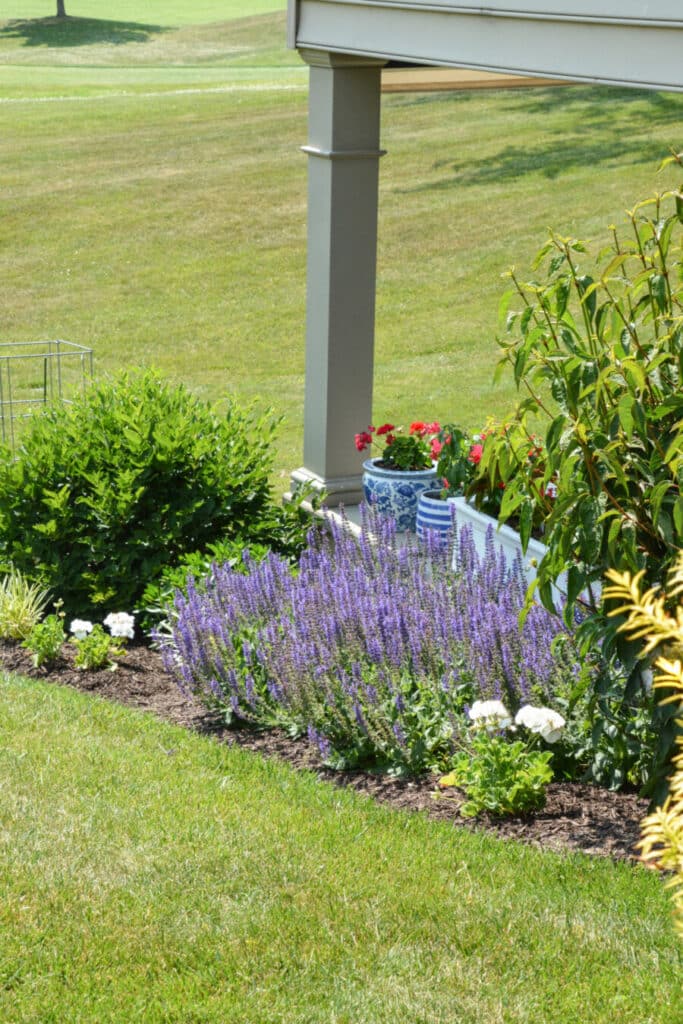
If you have foundational beds or landscaping around your home planted with shrubs and other plants, consider adding seasonal annuals or herbs to them. Tuck plants in foundational beds around your home or around any other plantings in your yard.
This not only adds more greenery and pops of color to your established garden but also helps to fill in any empty spaces and create a more cohesive look.
We planted white geraniums on the side of our home. These showy blooms draw immediate attention, particularly when tucked among green shrubs. The white geraniums complement the perennial purple salvia and the vibrant red flowers arranged in pots on our patio. The combination of these elements creates a delightful red, white, and blue aesthetic we love in the summer.
As summer turns to autumn, toss the summer flowers and plant annuals that love the cooler weather, such as mums, marigolds, and ornamental cabbage.
Pro tip: Consider the condition plants like the best. Plant annuals and herbs where they will thrive.
How To Plant Plant Hydrangeas In The Ground And In Pots, Urns, and Planters will help you to plant and care for hydrangeas.
Raised Bed Gardening
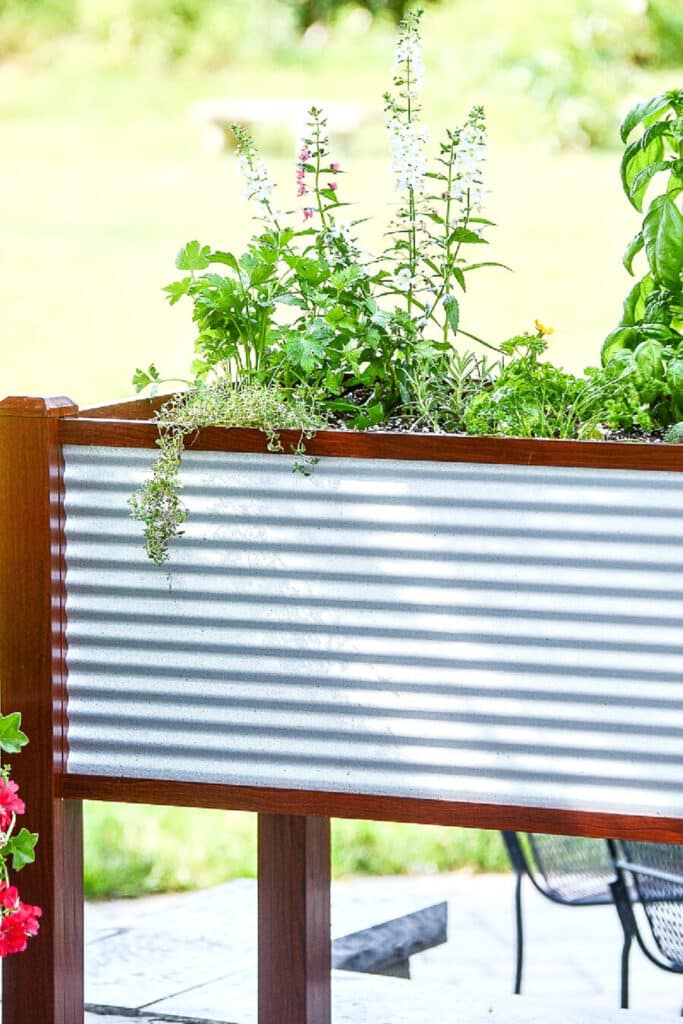
I like to think of raised bed gardening as a cross between container gardening and having a big garden in a backyard. Raised bed gardens are technically container gardens, just larger.
I am a huge fan of this kind of gardening. I like to head out the front door every morning to tend the raised beds. It’s good for my soul! And I’m rewarded for visiting them with a handful of vibrant flowers and herbs to take inside.
Below is an image of a mix of raised beds and container gardens at the end of our driveway, spilling over with flowers and herbs.
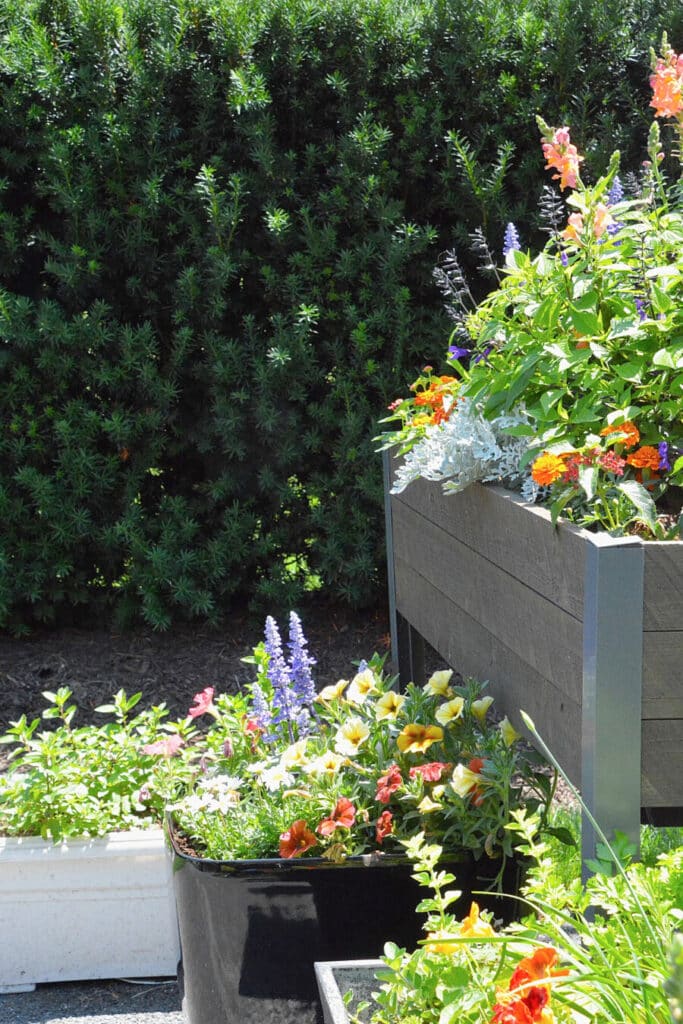
Advantages Of Raid Bed Gardening
The advantages of container gardening above are the same for raised bed gardening. Gardening at waist-high or nearly waist-high is so much easier than kneeling to garden.
Planting Vegetables And Perennials In Raised Beds
Many perennials can be planted in raised beds and wintered over. We planted pink hydrangeas in raised beds next to the porch at our StoneGable home. They came up year after year. These plants need the same things, like good soil, the right amount of sun and water, and deadheading, which other container plants do to thrive.
Perennials also need a layer of mulch to keep their soil moist and, in the winter, an extra layer of mulch to protect the root of the plant.
Vegetables are as easy to grow as annuals in raised beds. Smaller plants that grow upright or take up a smaller amount of space make a preferable choice.
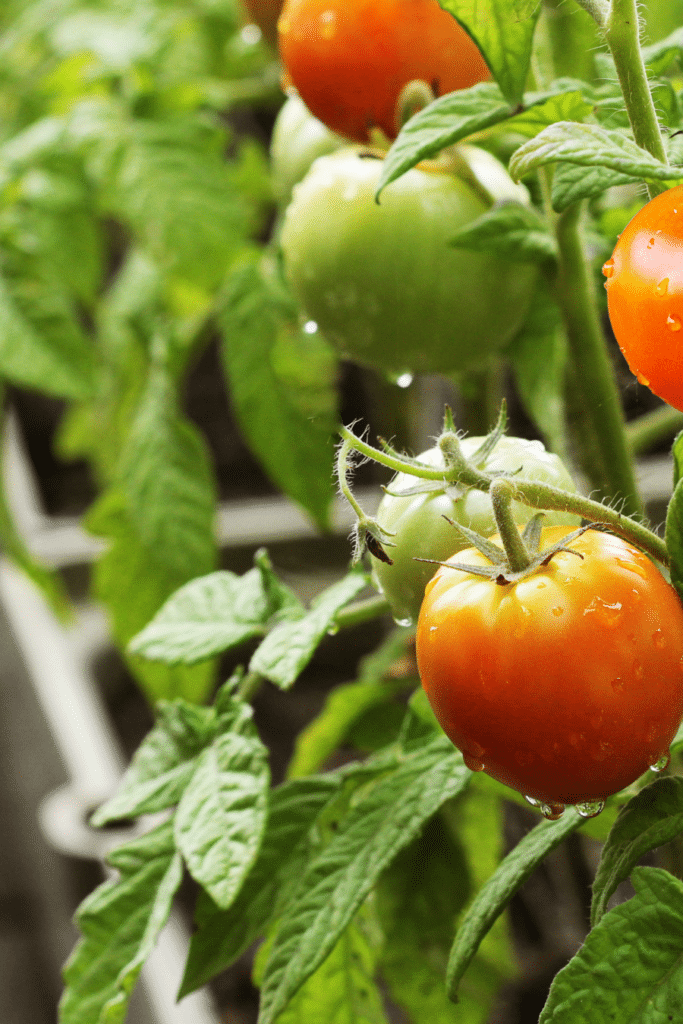
Embrace the benefits of a raised garden bed, as it optimizes your growing space while minimizing your effort.
Window Box Gardening
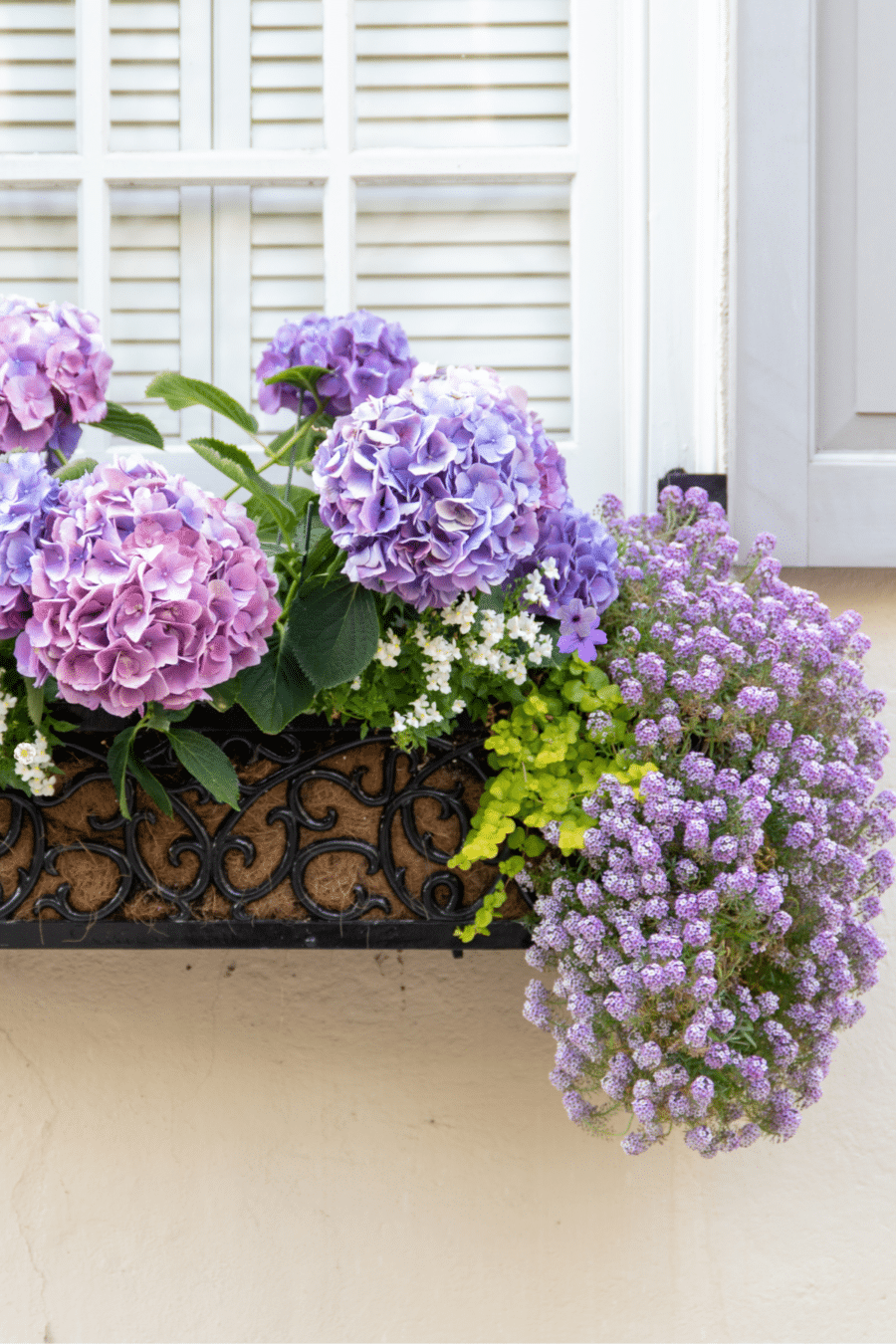
Beautiful window box gardening is another way to add greenery and color to your small space while enhancing its aesthetic appeal. Window boxes can be attached to the exterior of your home or apartment building or placed on a windowsill inside.
Advantages Of Window Boxes
Window boxes are an excellent solution for when space is limited and you want to cultivate plants, flowers, and herbs.
One of the biggest advantages of window box gardening is the ability to maximize the use of vertical space. This allows you to garden in areas where ground space is limited, such as balconies, windowsills, or fences.
Here are more reasons to use window boxes …
- Window boxes add beauty and charm to buildings, enhancing curb appeal and creating a welcoming environment. You can customize window boxes with various plants, colors, and arrangements to complement your home’s architecture and style.
- They are ideal for growing herbs, salad greens, and small vegetables, providing fresh produce right outside your kitchen window.
- You can easily change the plants in your window boxes to suit the seasons.
- They are easy to install and remove.
Where To Install Window Boxes
Think about installing a window box outside of a kitchen window and filling it with aromatic herbs like mint, basil, thyme, and even some leaf lettuce. They will create a focal point outside of your home. Your plantings can easily be snipped or pinched off to use in a little bouquet or when cooking.
Another place to use window boxes is around the railing of a deck. Window boxes of flowers around a deck are a charming look. Placed along the deck railing or perimeter, these window boxes soften the edges of the space. They creating a seamless transition between the built environment and the surrounding landscape.
We used window boxes as long planters on a sitting wall on our patio. We opted for these because they were not as high as other long planters we found.
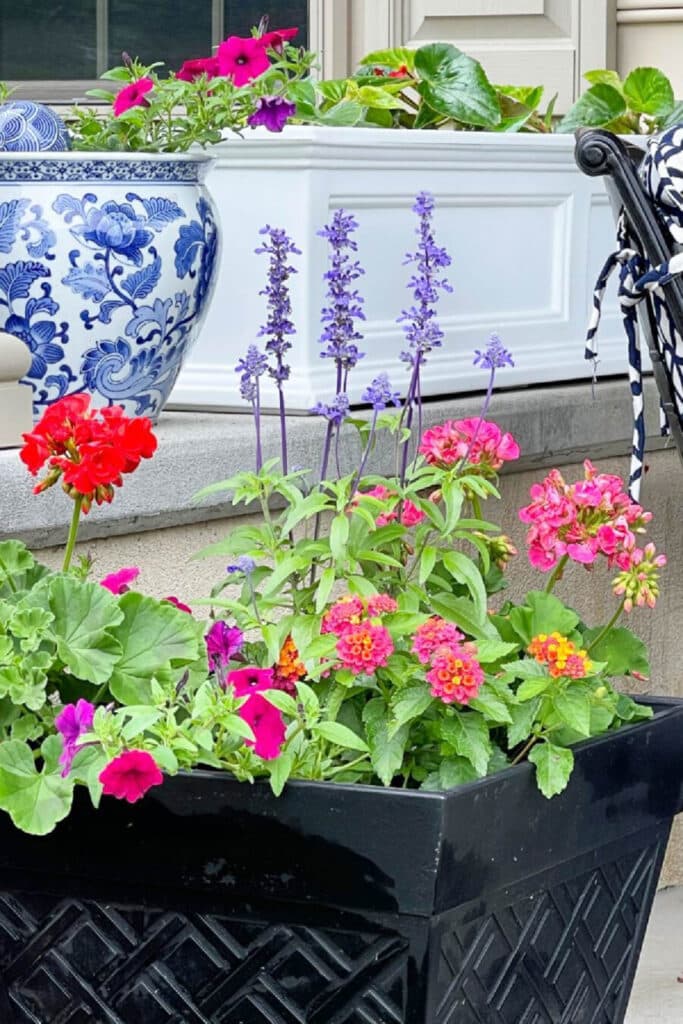
Whether you want to add a touch of color to your home, grow your own herbs, or simply enjoy the beauty of plants, window boxes offer lots of benefits that make them a delightful and savvy addition to any home.
Hanging Basket Gardening
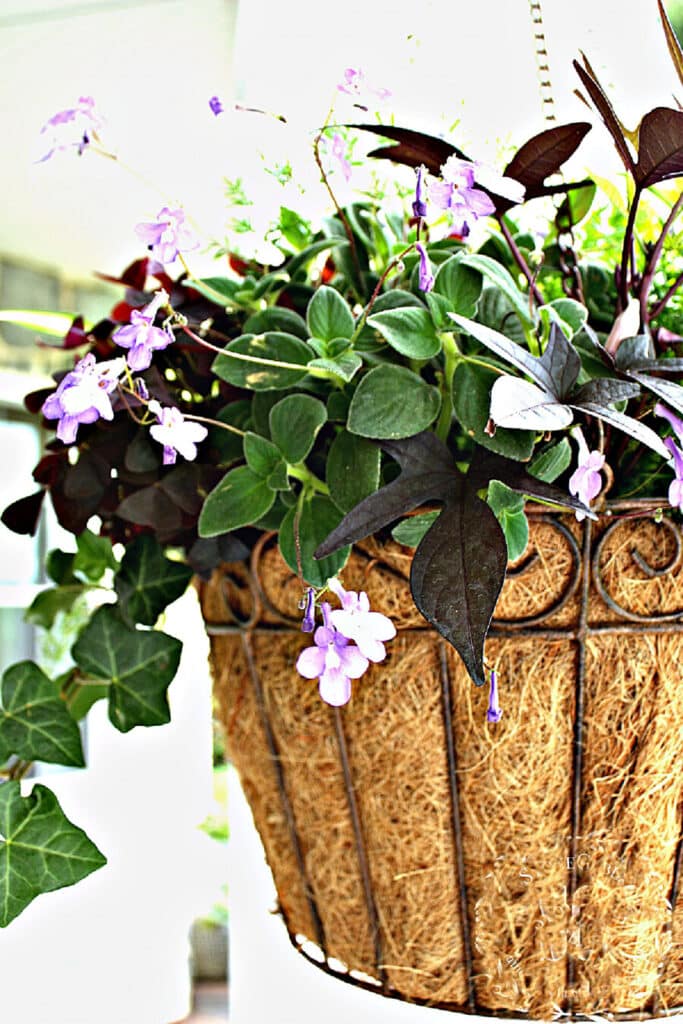
Hanging baskets are beautiful, compact, vertical container gardens that add a decorative element to any home. With a wide variety of plant choices available, they can be customized to suit our color palette and style, adding to the look and feel of your outdoor space. They add so much interest that they literally lift our eyes up.
Advantages Of Hanging Baskets
Hanging baskets allow us to make the most of vertical space, particularly in areas where ground space is limited. They are ideal for balconies, patios, porches, and small gardens, enabling us to enjoy the beauty of plants without occupying precious space.
Here are a few more advantages of using hanging baskets in your outdoor spaces…
- Hanging baskets add visual interest and dimension to outdoor spaces, creating a charming and inviting ambiance with cascading foliage or flowers.
- Elevated hanging planters can be less susceptible to pests and ground-dwelling critters, reducing the risk of soil-borne diseases and pest infestations.
- They can be hung from various structures such as hooks, crooks, pergolas, trellises, or arbors, allowing for flexible placement and creative arrangements.
- Hanging planters placed out of reach of pets and children can help protect delicate plants from being trampled or disturbed.
- They enjoy many of the same advantages as container gardens listed above.
I like to put together my own hanging baskets, like the one above and below, in interesting containers. I made the hanging basket below in an egg basket, choosing plants that grow upright, spread out, and like to spill over the edge of the basket. Just like other container gardens, make sure to use thrillers, fillers, and spillers in my little gardens!
This year, we have hanging baskets with strawberry plants in them! You can personalize hanging baskets with your favorite flowers, herbs, or even veggies!
Easy Care Tips
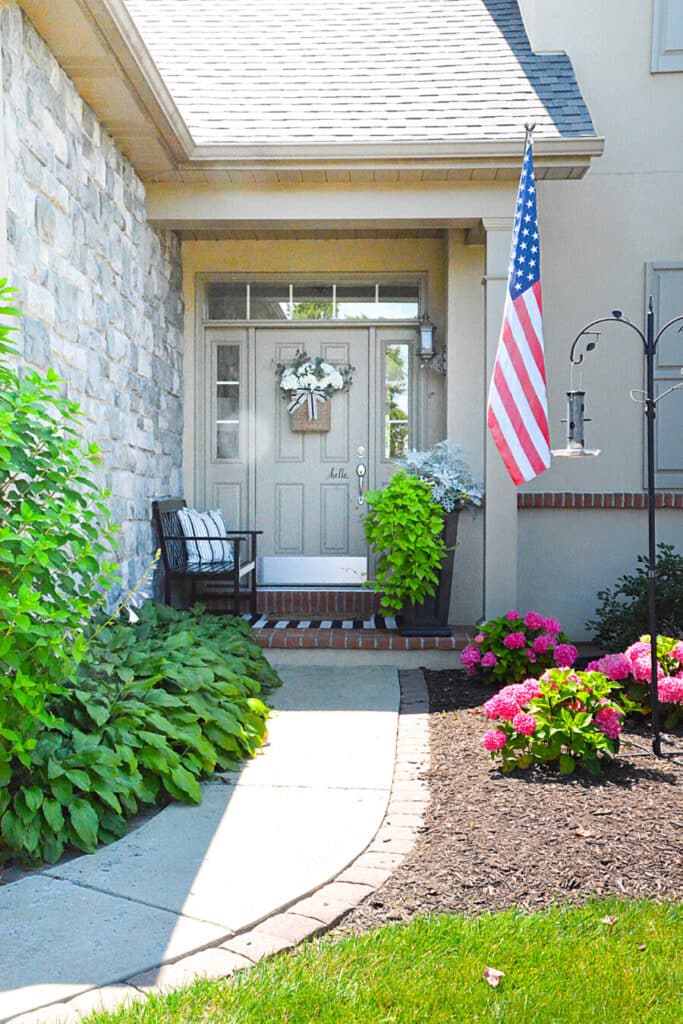
Follow these tried and true tips and your small space gardens will thrive.
- Choose plants for your garden zones.
- Understanding the sunlight requirements for the plant you are considering and plant accordingly.
- If you are planting in a container garden, window box, or hanging garden, make sure these containers have good drainage holes.
- Deadhead and trim off dead or spindly leaves and stems throughout the growing season.
- Use good quality soil. I like soil that has fertilizer already in it.
- Plants in containers may need to be fertilized since they do not get nutrients from the ground.
- Water regularity, but don’t let a container get waterlogged. Plants in exceedingly wet soil often suffer root rot.
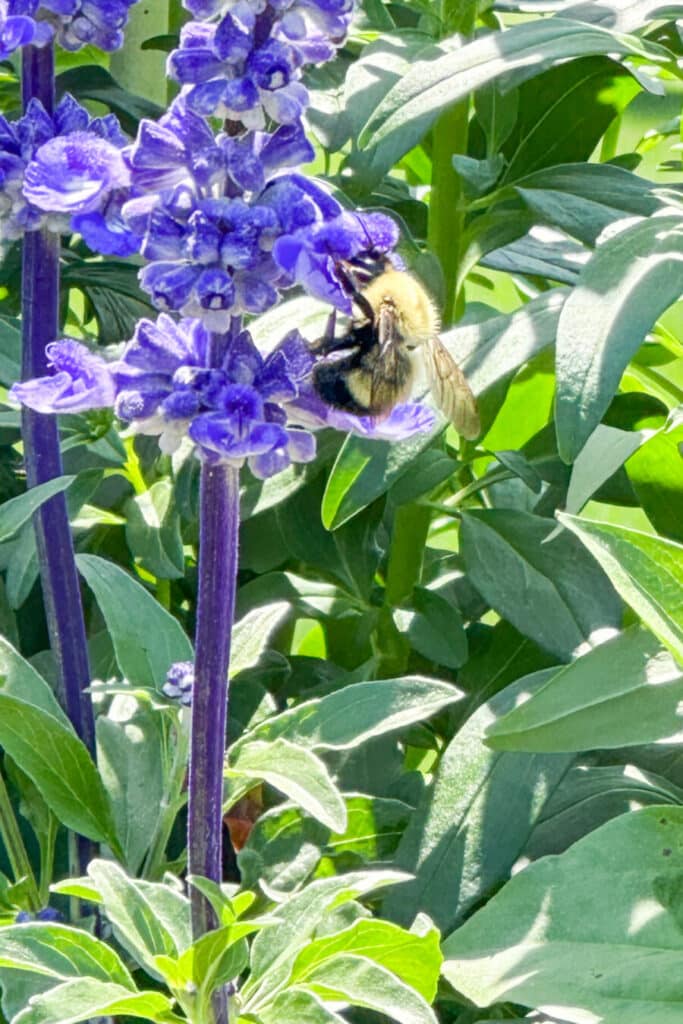
With these small space garden ideas, you can transform even the tiniest of areas into beautiful and bountiful gardens. Embrace the potential of your limited space and get creative to design a garden that reflects your personal style and brings beauty to your home.
So start planting and enjoying the beauty of your small spaces with these garden ideas!
Shopping
FAQs About Container Gardening
